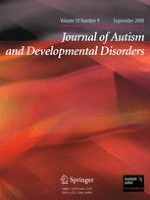01-09-2009 | Brief Report
Brief Report: Sociometric Status and Behavioral Characteristics of Peer Nominated Buddies for a Child with Autism
Gepubliceerd in: Journal of Autism and Developmental Disorders | Uitgave 9/2009
Log in om toegang te krijgenAbstract
We examined social and behavioral correlates of children selected by their peers to serve as peer buddies for an unfamiliar child with autism (CWA). Participants were 293 children from two public elementary schools who completed social status, behavioral, and peer buddy nomination measures. Peer buddy nominations for a CWA were related to: (a) perceived unpopularity; (b) being viewed as helpful and smart; and (c) lacking influence regarding popularity within the classroom. In contrast, peer buddy nominations for a typical boy were related to being viewed as popular, helpful, and self-confident. Students may select a social niche for CWA based on principles of peer homophily. Limitations and suggestions for future research are discussed.
